On which page or screen do visitors leave your website? You can find the answer in the exit report in Google Analytics 4. The only problem is that this doesn’t exist. Luckily, you can create it in less than 3 minutes.
Highlights
- GA4 exits are a metric that helps you quickly detect where visitors leave your website.
- To see exits in GA4, you need to build an exploration report.
- This will help you understand which pages may require your attention for 2 reasons.
What are exits in Google Analytics 4?
Exits in GA4 is a metric that shows you how many times visitors left your site on a certain page or screen. Strictly speaking, ending a session is more correct than leaving or exiting your site.
In practise, exits are namely incremented when somebody does one of the following:
- Close the browser or device.
- Close the browser window with your site (accidentally or on purpose)
- Leaves the browser window open, but does absolutely nothing for 30 minutes. GA4 will then automatically consider the session as ended, whereas your visitor may just be staring in awe at your hypnotizing website.
In other words, exits are the opposite of GA4 entrances, which mark the beginning of a visitor’s journey.
Unlike the bounce rate metric, the exit metric also shows you where people leave after visiting more than one page.
Before I show you step-by-step how to unlock the “goodbye, so long” data in GA4, let me first answer an important question…
Why do you need to know where visitors leave your website?
Besides having found or bought what they were looking for, people have other reasons to leave your website. Since GA4 cannot detect distractions in the heads of your audience, I exclude this one on purpose.

High exit rates can reveal weaknesses
A web page or screen can cause friction and lead to a suboptimal user experience. Something is odd and since people have little patience, they leave your site.
That happens, for instance, typically on pages with:
- Poor web design
- Crappy copywriting or thin content
- Buggy web development. E.g. of a form that doesn’t work.
Of course, that doesn’t apply to thank you pages, or confirmation pages that notify an online purchase was successful.
In an ideal world, those pages would have the highest possible exit rates.
Low exit rates can reveal opportunities
Pages that have low exit rates are great indicators of what your audience is hungry for. You can further analyze these and apply elements that make them so successful in other web pages of your site.
So, understanding where people leave, and stick on your site, can lead to a better overall user experience, more conversions and a higher engagement rate.
But at one point, all your users will leave your website.
Let’s find out where the departure takes place.
How to create an exit report in Google Analytics 4?
To see on which pages and screens visitors leave your site, you have to build an exploration report in Google Analytics 4. Follow the steps as outlined below:
Step 1: Click “Explore”

You can find the button in the left-hand menu of your GA4 property.
Step 2: Click “Blank exploration”
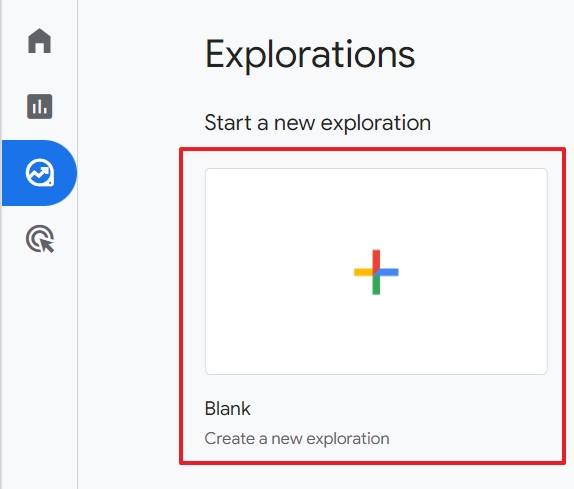
The fastest way to create your exit report is to start from scratch. To do so, click the “Blank” exploration image.
Step 3: Give your exploration a name

Give your exploration report a proper name. This will make it easier to find it later on. You can, for example, call it “Exits” or “Exit pages and screens”.
Step 4: Click on the plus sign of Dimensions
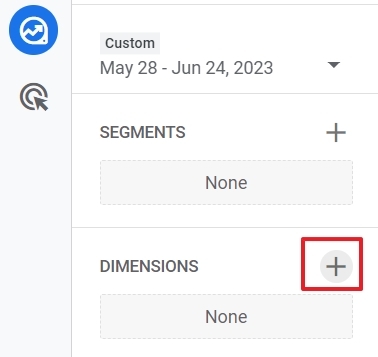
When you build the exit report, you need to add a dimension to it.
Step 5: Select a Page / Screen dimension
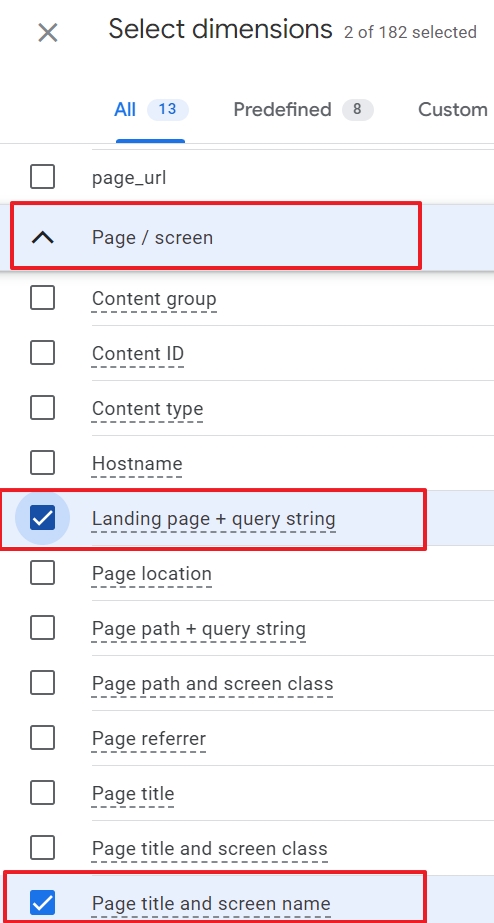
In the Page / screen section, select a dimension. The most useful ones are “Page title and screen class” or “Landing page + query string”.
Step 6: Import your dimension

Click on the “Import” button to add the dimension to your report.
Step 7: Drag the “Page/screen” dimension to rows
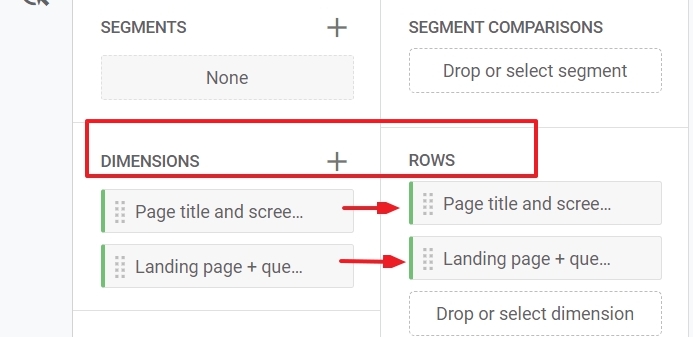
Drag the dimensions you selected in step 5 from “Dimensions” in the “Variables” panel to the “Rows” of the “Tab settings” panel
Step 8: Click the + sign of metrics
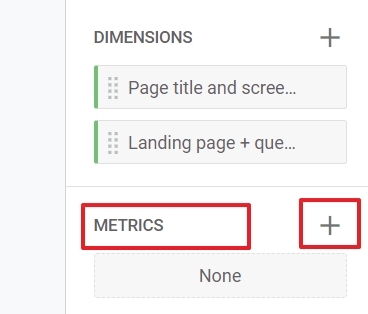
At this point, all you need is a metric to populate your exit pages and screens report.
Step 9: Select the “Exits” metric
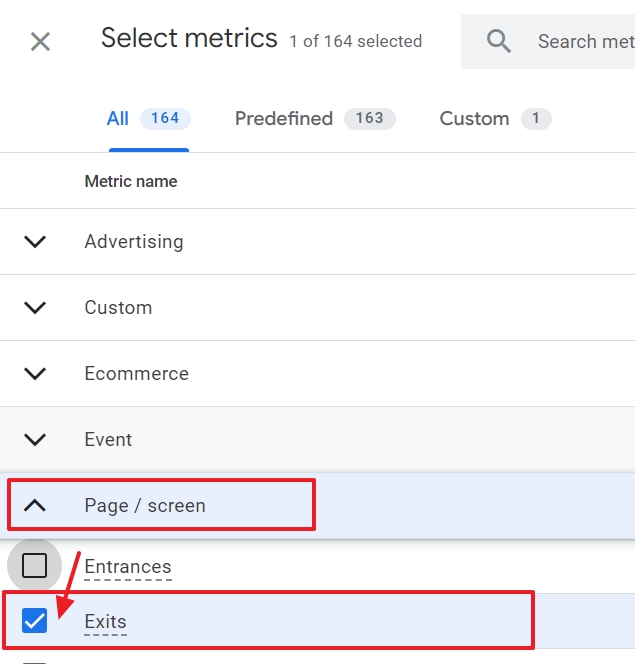
The “Exits” metric is a part of the Pages/screen section.
Step 10: Import the Exits metric

To use the metric, click on the blue Import button at the top of your screen.
Step 11: Add the “Exits” metric to your report
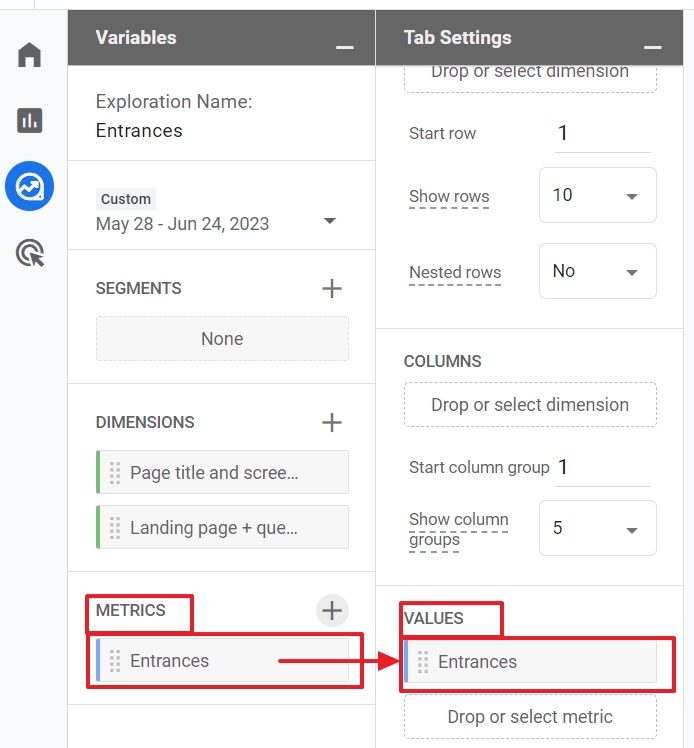
Finally, drag the “Exits” metric to “Values” in the “Tab settings” panel.
When you have followed the steps above, GA4 will instantly generate your exit pages report.

In the last column, you can see how many sessions ended on a page or screen.
Just as with any other exploration report, you can:
- Share it with your team for further analysis.
- You can also add segments to the report. This will, for instance, allow you to see if there is a correlation between certain campaigns and high or low exit rates.
- Add other metrics to the report. It can, for instance, be useful to add the entrances and exits data in one report.
Once you have created your Exit pages and screens reports, you can find it back under “Explore”.

Final note on Google Analytics 4 Exits
Just as useful it is to know on which page people land on your site, it is good to know where they end their journey.
You can (still) not dive into the heads of your visitors and detect the exact reason they leave your site.
Yet, the exit metric and report in GA4 can help you detect where things go wrong.
On the other hand, pages and screens with low exit rates are worth looking at too. They can contain elements that you can apply on other pages too.
Now you have reached the end of this article, you have two options. Leave our site, or do yourself a big favor and subscribe to your newsletter for data-driven marketers. It’s the easiest way to stay updated about the rapidly changing digital landscape.
